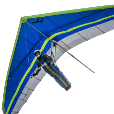I'm not sure but I think that the layers all turn on in block editor - they do for me generally.
What you could do is 'lock' the layers that you want to keep, unlock the layers you want to delete - that setting carries through to block editor. Then delete the unwanted entities - everything you want is on locked layers and should be OK. Note that with this, for example, any block that is on an unlocked layer will be deleted even if it contains entities that are on locked layers, so be wary, but it is good for lines, text, arcs......

